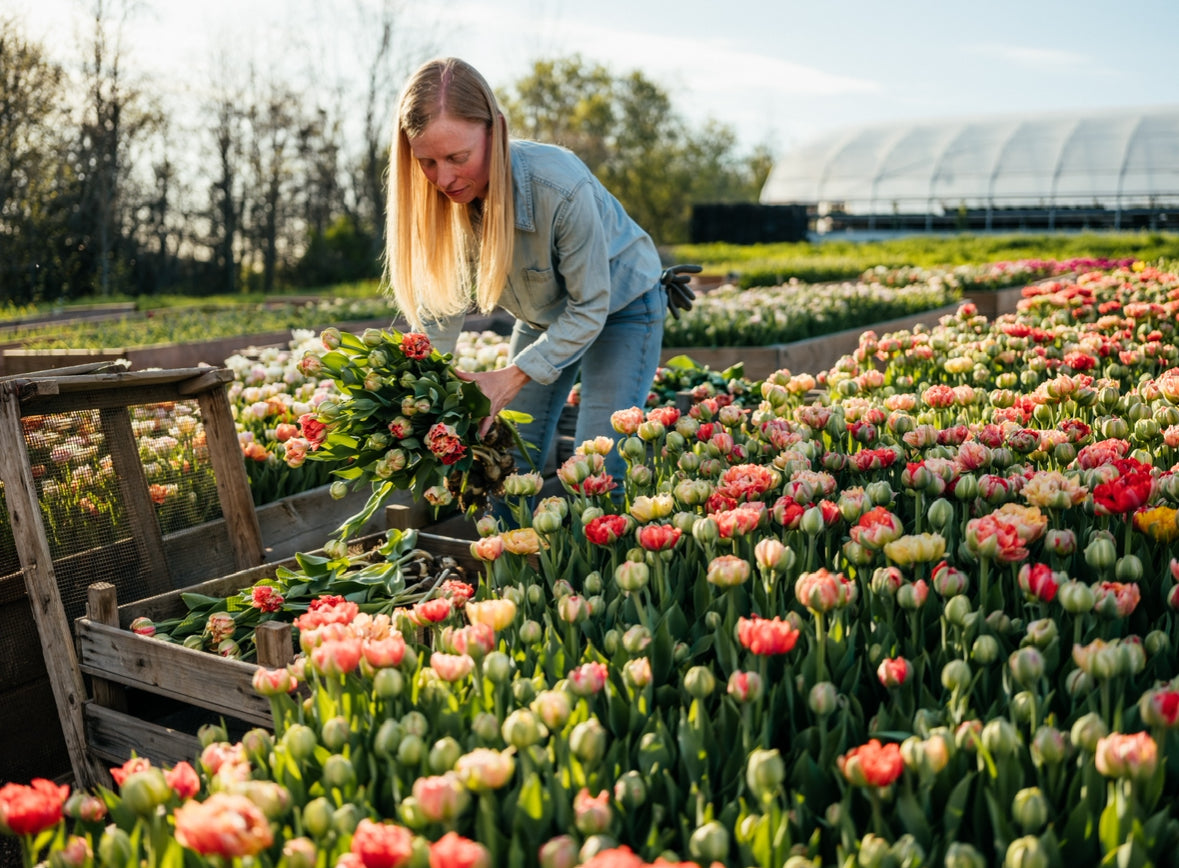Why do we cut the bulbs off of our tulips when we harvest them?
Why do we dig the tulip bulbs out in the spring to begin with?
🌷Tulips are supposed to be perennials, right?!
If you have ever wondered either of these things as you’ve watched us harvest thousands and thousands of tulips (with the bulbs on!) here at our farm you’re not alone!

💡These are our most frequently asked question.
So let’s answer them👇🏻
🌰 First, let’s talk about the tulips you have planted in your home gardens.

In your home gardens, after a tulip has finished blooming the petals will drop and the foliage will begin to yellow and die back. That simple process is more important than you may realize. As the foliage yellows and dies back, nutrients are being sent back down into the bulb. That food, derived from solar energy through photosynthesis, is stored in the form of carbohydrate in the bulbs. This food is required for the growth and the flowering process of tulip in the following year. This is the reason we always recommend that you leave the foliage on your spring bulb plants in the garden after they’ve finished blooming. The foliage may not look very aesthetically pleasing as it yellows and dies back, but it’s serving a purpose.
✂️ So what happens when we cut the entire stem (leaf, bloom and all) off of a tulip bulb, in order to produce a cut flower for you? 
🌰 When we cut the entire stem, leaf and bloom off of the bulb, there is nothing left to photosynthesize and create the necessary food stores to send to the bulb to create a bloom for next year. No stem, no leaf and no bloom on a bulb means no pretty flower next year. When we use a tulip bulb to produce a cut flower for you, we sacrifice the bulb and the future year’s growth in order to produce a flower.
🤷🏼♀️ So why not just cut shorter stems, leaving a few leaves on the tulip so that it can bloom again the next year?

🌷 If only it were that easy! Most tulip varieties only grow 12-18” tall. We need to cut the stems at the very base of the bulb to maintain that height in order to produce flowers that will fill your vases perfectly. Keep in mind, that stem will be cut several times before it even reaches you: once to take the bulb off, another time when the tulips are being graded and bunched, and once more when the tulips are arranged in bouquets. Every inch makes a difference when we’re working with a flower that is shorter to begin with, so that we can ensure you have a bouquet that will fit your vase. In our experience, it’s often the case that the shorter the stem, the lower the perceived value of a flower for customers, even if the head of the flower is the same. This is one of those times where size does matter.

So what happens to all these bulbs if we can’t replant them for flowers next year?

They hit the compost. We know, we know, it’s such a shame and seems so wasteful! Every time we post photos or videos of us composing these bulbs we have folks reaching out asking us to save the bulbs for them, so that they can take them home to plant. Remember, these bulbs won’t produce the pretty blooms you see us harvesting now next year. Because we have cut the stem, leaves and bloom off of these bulbs, we have not left them with anything to send nutrients back to the bulb with, in order to produce next year’s flowers.

Tulips are very labour-intensive crop for small scale flower farmers. Every year tens of thousands of bulbs are planted on the farm by hand. We often must wait 5-6 months before they will bloom, and once the tulips bloom there is a significant amount of labour again in harvesting, grading, processing and bunching them. In the winter, propane heat to power our greenhouse, allowing us to enjoy tulips from February through till April, adds another expense. Tulips are not always a highly profitable crop to produce, as a small grower, due to the incredible amount of labour involved in producing them.

With that said, tulips bring our customers SO MUCH joy every spring and they’re a staple here on our farm from February right through until May. Nothing quite beats the joy of harvesting tulips in our heated greenhouse in the middle of the winter, or bringing in those first few buckets of tulips from the field in early May, after a long winter of anticipation!

So how exactly DOES a tulip bulb get produced, if we just keep composting the bulbs we bring in? Where are all of these bulbs coming from?
More on that in a post soon!


